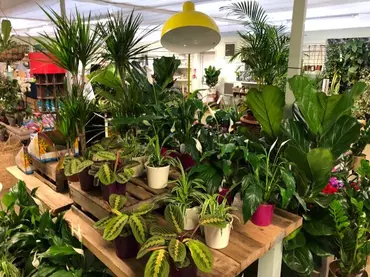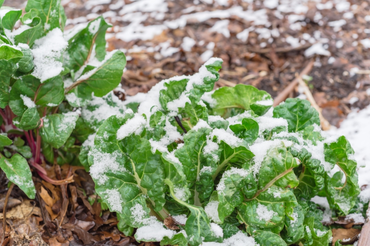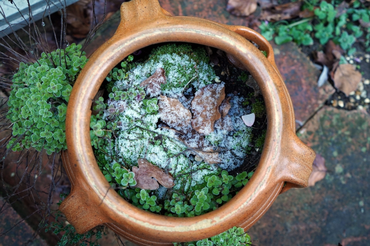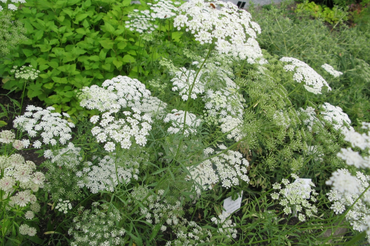
House plants continue to be a popular addition to home décor, bringing life, colour and texture into your home. However, if you want your house plant to thrive, it will require care and attention. How demanding your house plant is will depend on the species and variety. Here’s how to give your house plants everything they need.
Read the Care Instructions!
Most plants come with labels providing care instructions, so take time to read and understand what your plant requires. Some, such as cacti and succulents are low maintenance and will be happy on a sunny windowsill and require very little watering, and practically none at all in the winter.
Positioning is the most important thing to consider when selecting your houseplant, is it going to be located in a sunny or dark spot, is the area cold, hot, humid? Generally, houseplants don’t like extremes and large swings in temperature. Some plants such as ferns can live happily in quite a cool dark place which may surprise you. What they won’t like is being close to a heat source such as a radiator or fan heater, or even an open window. Some plants are very sensitive to cold and a chilly breeze will put them under stress.
The majority of houseplants tend to come from the tropics, so prefer warm moist air. The air in modern homes can tend to be quite dry, especially when the central heating is running during the winter. This can cause the leaves to dry out and go brown at the edges. Spraying them weekly with a deionised water in a spray gun will help prevent them from drying out. Cleaning the leaves with a leaf clean product also prevents dust build up and helps them to stay healthy. Generally, plants with larger leaves tend originate from the forest floor where it is darker and shaded, so prefer not to be in direct sun for too long. Plants with narrow/ thin leaves are the opposite.
Watering- Killing plants with kindness!
Most houseplants fail due to overwatering. Its tempting to have a rota/ routine to water so that you don’t forget, but quite often this can lead to overwatering. The conditions in your home will vary over the year, which will dictate how much water they need, so you will need to check them before going around with your watering can. In the summer weekly or twice weekly watering maybe necessary, in the winter once a month might suffice. The size of the pot and root system will also dictate how quickly the water is taken up and evaporates. We often think we are helping plants to grow by watering them more, but the opposite is true, too much water rots the roots and stem, it also encourages diseases and fungi to establish themselves in the soil. You will be surprised by how little water they need. Most plants give you some early warning signs when they are in need of water. Plants with large leaves will go droopy and branches start to sag. Once watered, they recover quickly, usually within 12-18hrs. You may notice that some of the leaves on your Ficus are starting to look a light lime green colour or have a tinge of yellow to them, this usually means they are a bit dry.
The finger test!
The easiest way to check whether your plant needs water is to put your finger in the soil up to the first knuckle and see if the soil feels wet- damp. If it is then its fine and you can leave it for another week. If you pull it out to find that there are bits of dry compost on you finger and no signs of dampness, then give it a water. Another sign that the compost has dried out is to look at the inside edges of the pot. If there is a reasonable gap between the compost and inside pot edge then the soil is dry. This is fine for cacti, but not for other houseplants.
Re-potting
If you have your plant for a long time and it grows well, you may find it starts to get pot bound, which means the roots need a larger pot with more compost. This process is called ‘potting on’. If they are squashed, the delicate roots can be damaged – meaning your plant fails to get the nutrients it needs. You will also find the compost dries out quickly. By potting on you are giving both your plant and its roots the space they need.
Use the Correct Potting Mix
Each plant has its own optimum environment, and this includes what they are planted in. Succulents and cacti are best suited to a sandy potting mix made up of potting soil, gravel and sand in equal parts. This is because it mimics the hot, dry environments they are used to. Some house plants such as African violets and azaleas prefer ericaceous (acidic) soil so if your house plant requires this be sure to buy a bag of ericaceous soil ready for when you need to pot your house plant on.
Remember to Feed
While the roots of garden plants are able to spread to find the nutrients they need, container plants such as house plants will need to be supplemented. Provide your house plant with the right amount of nitrogen, phosphorus and potassium to help it thrive. For lush foliage, use a nitrogen-rich feed or a feed containing magnesium – this will stop leaves from yellowing. Orchids only require limited feeding of a general fertiliser, whereas citrus plants will respond well to added magnesium, such as a monthly boost of Epsom salts. As you can see, each plant has its own needs depending on type, so it can be useful to keep a list of when your plants were last watered and fed – remember, overfeeding can do as much damage as underfeeding! Again, read the care instructions that came with your plant to ensure you are giving it exactly what it needs. Generally, we feed our plants once a fortnight from May- Sept and once a month over the winter months. Cacti and succulents only require minimal feeding, once or twice a year.
Don’t forget, you can always ask our staff for advice. We know how much pleasure house plants can bring and want you to enjoy watching your purchases reach their potential and bring vibrancy and colour into your home.




